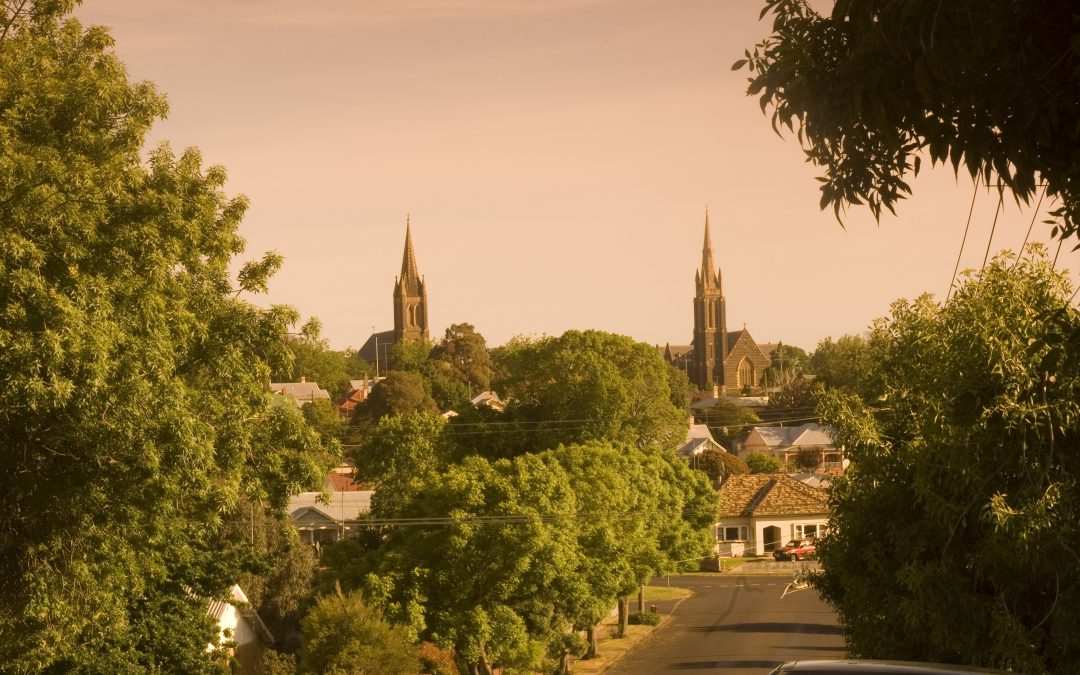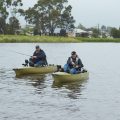With a strong religious background, churches were amongst the first buildings created in Hamilton as well as each of the villages throughout the Shire with the stunning architecture providing a glimpse into the past. We have created a series of guides, taking you to the stunning churches dotted throughout our region.
Starting our journey in Hamilton, feast your eyes on some of the town’s greatest architecture and journey back to the 19th century around the time most of Hamilton’s churches were built, starting with the very first, St Andrews Presbyterian Church (21 McIntyre St) a gothic-styled church serving the town and its surrounding regions for over 165 years. The foundation stone was laid in 1854 and provided the local Presbyterian community with Sunday Mass and Sunday school services. Although having been constructed in 1854, the St Andrews’ structure we see today is the result of its latest reconstruction which took place in December 1907 resulting in the church being reopened on June 6, 1909.
Perched opposite St Andrew’s you will notice the Anglican Christ Church Co-Cathedral, another gothic styled church that is the second to be built on the site. The original church, St Botolph’s was pulled down with the foundation stone for the current church laid in November 1876 with its completion, ready for worship, in August 1887. The church organ contained with the Christ Church was built in 1892 and is classified by the National Trust of Australia, being the only major example of a Casson organ in Australia.
These two churches are a significant landmark to the town as their matching spires dominate Hamilton’s skyline and can be seen from almost all over town.
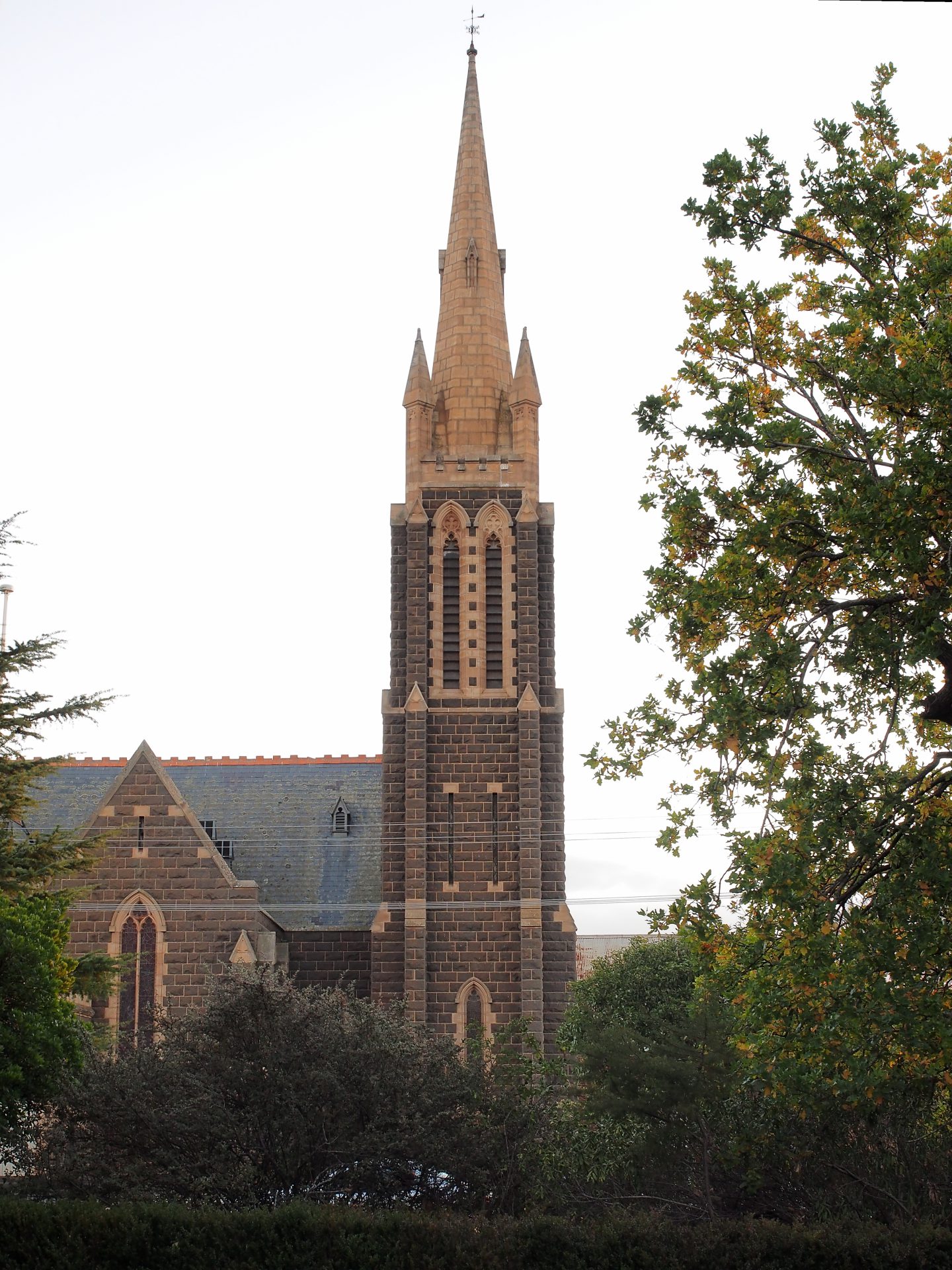
St Andrew’s Prebysterian Church
Another notable Hamilton steeple, Saint Mary’s Catholic Church is located along Lonsdale Street. With the first building of worship erected during the 1850s known as “the little wooden chapel on She Oak Hill”. The Gothic style bluestone Church which stands tall today opened for its first section in 1866. Featuring Mt Sturgeon columns, arches and windows, the Church has stunning stained glass windows created by Jean Orval in 1959.
To check out some of the most famous the Lutheran Churches of the area head on to Hamilton’s neighbouring town, Tarrington. Here you will find the incredibly striking steeple of the St Michael Lutheran Church (7901 Hamilton Hwy, Tarrington) which takes over Tarrington’s skyline. St Michael’s was first built around 1854 and has undergone as many as four restorations in its lifetime. The original church was a timber building built around 1854 which was replaced by a bluestone building erected in 1858 this was replaced by another bluestone building which was erected in 1863. The iconic red brick building standing today was constructed throughout the late 1920s, with its foundation stone laid on July 18th 1926.
Follow the Hamilton Highway taking a right onto Tabor Road where you will discover the Bethlehem Lutheran Church Complex. The complex dates from the mid-1850’s when area, south east of Hamilton was settled by devout German Lutherans. Original buildings of a primitive bluestone church and classroom as well as a small timber manse have all been demolished and replaced multiple times. The second manse, a timber federation style house was relocated to a nearby property where it survives and an orange brick home now serves its purpose. The second church also survives, demonstrating a rare example of Romanesque style, although it has been much altered for its use as a school. The present church was built in 1911 and survives in original condition today, including containing its original organ, furnishings and memorials. The complex also houses a cemetery and significant trees that survived the demolishing of the first manse, a timber cottage where the trees marked its gateway.
Back into Tarrington head along Oval Ave and on to Tarrington-Strathkellar Road until you meet up with the Glenelg Highway. Just a short drive down the Highway between, you will find the Trinity Lutheran Church Complex (8186 Glenelg Highway, Warayure). The red brick and render church that we see today had its foundation stone laid on the 25th of March in 1909 and was extensively renovated in the 1930’s. The complex now comprises of the 1909 church and the Sunday school, hall and manse that were re-built after the Second World War.
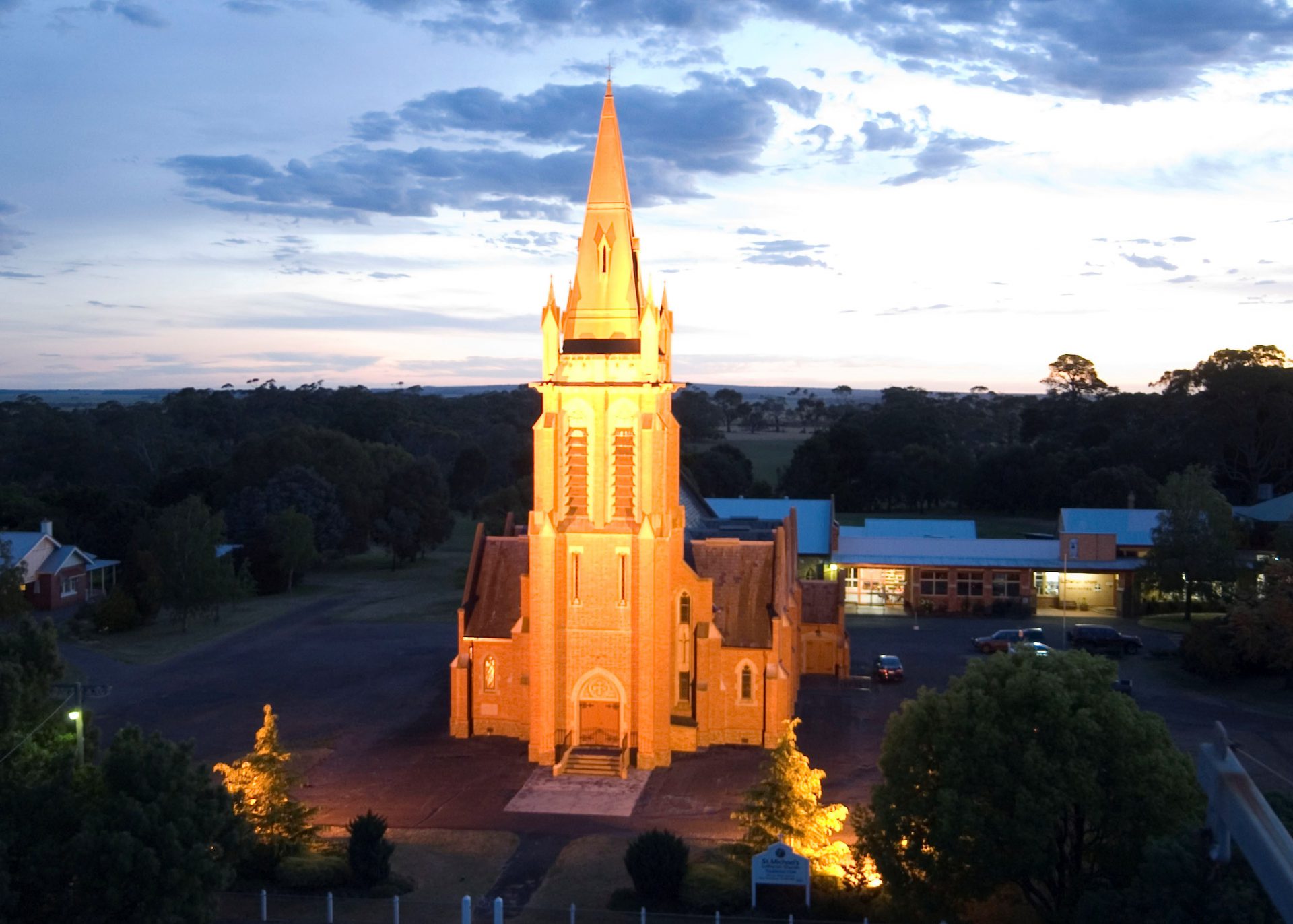
St Michael’s Lutheran Church
Continuing along the highway into Dunkeld you will find the former Dunkeld Uniting Church which closed in 2012 and is now privately owned. Previously known as the Dunkeld Weslyn Church and later the Dunkeld Methodist Church, the current English Gothic revival style orange brick church was built in 1914, replacing an earlier timber structure which was built in 1867.
Continue to Glenthompson and make your way to McLennan St where you will find a traditional example of a Gothic revival styled church. Built in 1914, on land donated by Mr. W. Scott in1890, St Peter’s, (14 McLennan St, Glenthompson), was constructed of red brick and has a corrugated iron roof. To this day, St Peter’s is still a great representation of Glenthompson and the Anglican worship.
As you enter inside this early 20th century church, you are greeted by a mural that encompasses the famous Glenthompson handmade brick walls within. With support from local Elizabeth Cuming, the mural was designed and painted by talented visual artist and curator, Gareth Colliton from Warrnambool and portrays the scenes from the life of St Peter – Patron saint of the church. Familiar faces of Glenthompson’s residents and parishioners at the time can be spotted throughout the mural donning their denim jeans, flannelette shirts and Akubra hats.
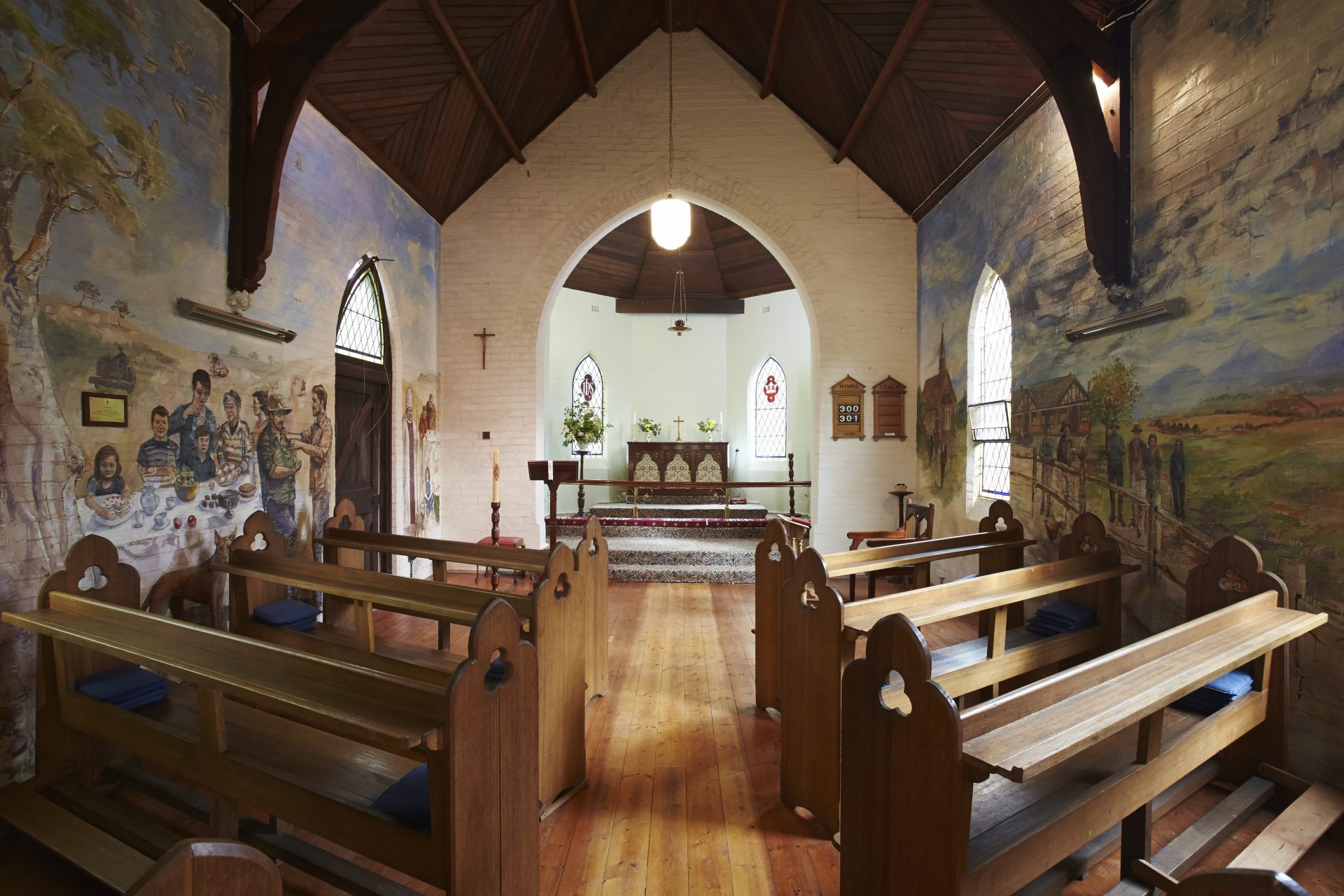
St Peter’s Anglican Church Glenthompson



